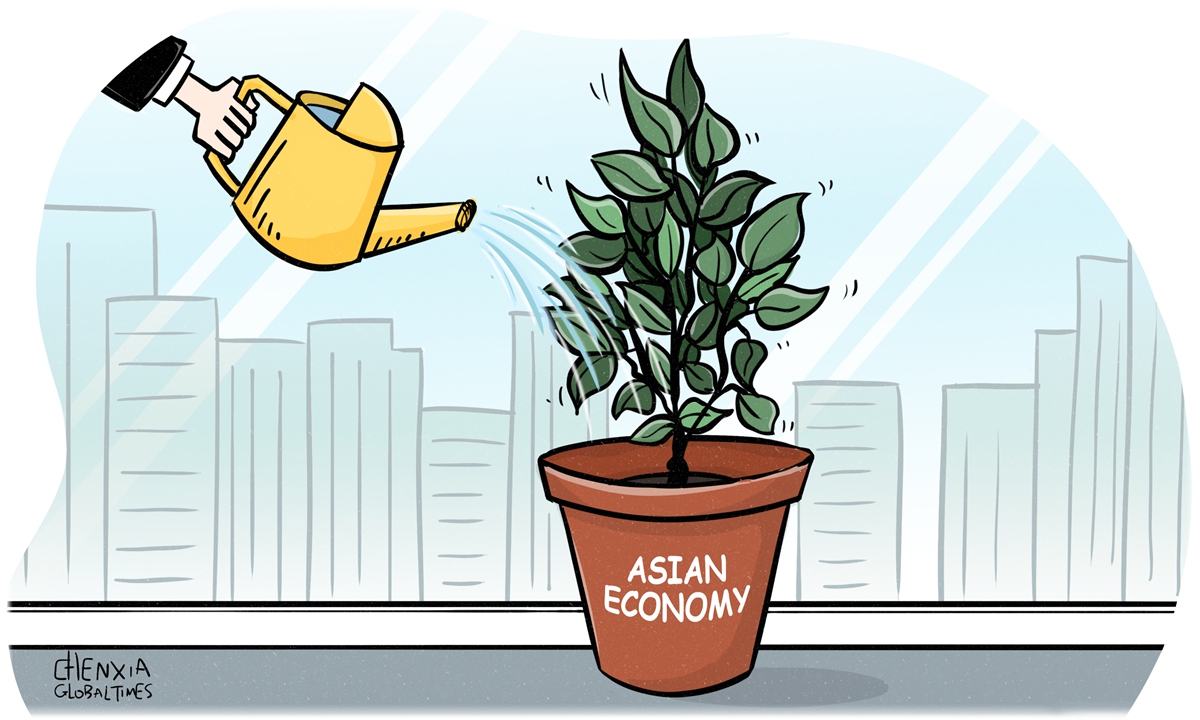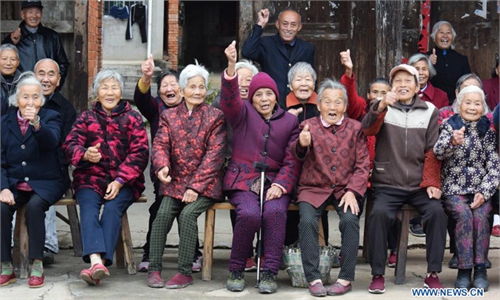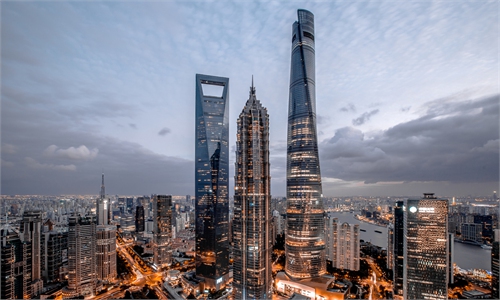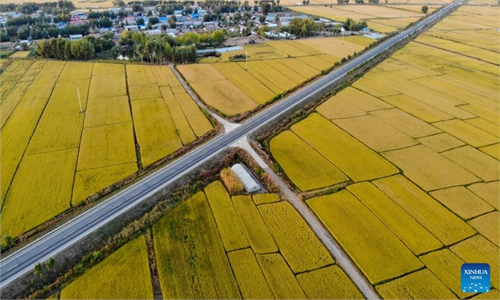
Illustration: Chen Xia/Global Times
Excluding China, the rest of developing Asia is forecast to see 5.3 percent economic growth in 2022 - the first time in more than three decades that the rest of developing Asia will grow faster than China, the Asian Development Bank (ADB) said in its latest outlook report, which was released on Wednesday, CNBC reported.
The world economy, still reeling from the pandemic, inflation, food insecurity, and a looming debt crisis, is facing an increasingly uncertain outlook. So, it's tough to make predictions now, especially about emerging market economies in Asia that is relatively fragile in the face of external uncertainties, as most of them are export-oriented economies.
Is ADB's prediction accurate? It is difficult to know the answer, although some emerging Asian market economies did show some resilience and relatively fast growth, a phenomenon which reflects the inherent dynamism in Asia.
Vietnam's GDP grew 7.72 percent year-on-year in the April-June quarter thanks to solid exports and consumer spending. It is the highest second-quarter GDP growth recorded by the country in the past 10 years, Xinhua reported.
Malaysia's economic growth may surpass official estimates of between 5.3 percent and 6.3 percent in 2022, as the country saw an economic growth of 8.9 percent in the second quarter as domestic consumption keeps accelerating.
Some Asian economies have been able to make a rapid economic recovery from the pandemic lows through effective economic and investment policies. Those countries' economic recovery will be conductive to economic integration and the overall development of the Asian economy.
China and the emerging market economies in Southeast Asia are at different stages of development. After four decades of rapid economic growth, China is now the world's second largest economy. Those emerging market economies, such as Vietnam and India, are in an early stage of development and they still need time to climb the ladder of industrial value chain.
Because of their different stages of development, it doesn't make much sense to simply compare China with other Asian countries in terms of their GDP growth rates. Some Western organizations and media outlets deliberately compare China with other economies in the region, so as to provoke vicious competition among them.
With a departure from the obsolete pattern concentrating on the quantity of growth, China has moved to a stage of development with a focus on quality development. With a high-quality growth, China's average contribution to the global economic growth still exceeded 30 percent over recent years.
For a long time, China has been an active participant and important contributor to the Asian economy. In 2021, the trade volume of goods between China and ASEAN was $878.2 billion, reaching a year-on-year increase of 28.1 percent. Among them, China's imports from ASEAN were $394.51 billion, reaching a year-on-year increase of 30.8 percent. ASEAN has become China's largest trading partner for the second consecutive year in 2021 as some export-dependent Southeast Asian countries gradually shift their export destination to China thanks to its huge market size.
The Regional Comprehensive Economic Partnership (RCEP), a trade pact among 15 Asia-pacific nations, came into force for 10 countries including China on January 1, marking the formation of the world's largest free trade zone in trade volume. The coming into force of the mega deal has expanded market access, allowing more products to get into the Chinese market with zero import tariffs. In the coming years, China will unswervingly expand its opening-up and continue to make the country a giant market for Asian economies and a hot spot for foreign investment.
China's economic miracle should be associated with its successful integration into the Asian economy, and on the other hand, China has also made considerable contributions to economic growth in Asia. There is no need to read too much into CNBC's report saying "the rest of developing Asia will grow faster than China" in 2022. Those who try to drive a wedge between China and its friends in Asia should abandon geopolitical mentality and learn to view Asia's economic growth from the lens of win-win.
The author is a reporter with the Global Times. bizopinion@globaltimes.com.cn



